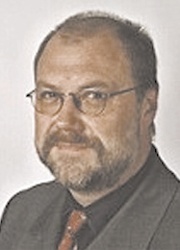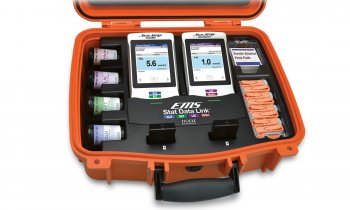Streamlining rehabilitation
Germany - Rehabilitation clinics are taking on an increasingly important role, because the country's Social Security Code indicates that, where possible, rehabilitation is preferable to providing pensions and long-term care.

This is the logical consequence of a changing demographic structure and working conditions, as well as increasing numbers of elderly patients with therapeutically challenging conditions and increasing multi-morbidity. With their specific structure and focus on therapeutic measures, which include psychosocial aspects and a ‘holistic’ approach, the work of rehabilitation clinics can result in the reintegration of patients into their homes, society and occupations.
The cost-effectiveness of rehabilitation is also a key issue. However, many have no transparent system for data exchange and archiving, which can lead to duplicated and inconsistent data administration. Orders for laboratories, appointment planning and diagnosis are often written manually, and then delivered to departments by messengers, where the details are again logged manually. This results in a significant time delay between an order being placed and a result achieved. Investing in a modern electronic data processing system based on new technological developments has become essential. At the same time, such a system must reflect existing clinic structures and integrate heterogeneous concepts.
To meet these needs, rehabilitation clinics funded by public insurance organisations are piloting the development of rehabilitation concepts. For example, at the 190-bed Münsterland Clinic, in Bad Rothenfelde, various organisations (see box) participated in setting up a new electronic system, into which the clinic’s existing patient administration and book-keeping system (supplied by NovaCom) was integrated. The social data are exchanged externally with the funding institutions in line with legal guidelines.
Münsterland Clinic, founded in 1995 and funded by the Public Insurance Organisation Westphalia, specialises in orthopaedics and rheumatology and provides in- and out-patient therapies for those who have left hospital following treatment. The clinic also works closely with hospitals and medical faculties in a number of universities.
The objective was to create a central electronic data pool, to contain individual patients’ files, and to enable doctors to add notes, and to provide an order/entry procedure for the laboratory and appointment planning, facilitating optimum time and resource management for all phases in the rehabilitation process. The order/entry procedure transmits all orders to the subsystems and retrieves relevant data from the appointments, laboratory and care-management system, visualising these in the electronic patient file. Planning is done almost in real-time, errors or misunderstandings caused by insufficient information or lost paperwork are unlikely.
Along with the existing patient administration system, the appointments planner, laboratory system, electronic diagnosis and services logging, electronic care documentation and planning, plus digital voice recognition, are all connected by a defined interface via the communication server.
Diagnoses are coded according to the rehabilitation-specific ICD 10 code, set by the funding organisation via coding software, and therapies are also coded according to a catalogue of therapeutic services. The subsystems retain data authority over their specific areas.
The patient administration system transmits the required master data for electronic data transfer to the funding organisation.
All processes in the electronic patient file originate from a standardised desktop, structured in relation to individual patients, and each is given a lifetime ID number for quick identification on readmission. Administration and archiving of all patient-related data within the electronic patient file means that all patient data is accessible at any clinic workstation, with defined and authorised access for all users. All patient/treatment data are securely archived to comply with legal requirements. On re-admission, all the patient’s data from the previous attendance are immediately at hand.
Business processes are optimised via workflow. Additionally, quality assurance is supported by the introduction of comprehensive quality management (all processes can be retraced). A medical discharge report is the last document for in-patient treatment, and all necessary data, e.g. from the admission report to examinations and laboratory results, are automatically fed from the electronic patient file into the appropriate spaces in the form on screen. The final discharge report can be compiled more quickly and easily and reaches its destination much faster.
Advantages and disadvantages - Overall, this is a trend-setting solution convinces because of its numerous advantages. The level of acceptance among clinic staff was very high shortly after the introduction of the new system. Central data storage, which means all patient data is entered in the system only once, also saves a lot of time.
Status tracking is possible, which includes electronic data transmission, the automated creation of a discharge report, and the fast and targeted data recall facilities. Paper and transport costs have also been reduced significantly.
The access authorisation concept ensures high security. A standardised desktop eases workflow and facilitates fast familiarisation, with little need for training. Independence of software suppliers is achieved by using standardised interfaces, therefore reducing expenditure on customisation. The once-only development of this solution and co-operation with other funding institutions and clinics has created a synergy.
Due to the modular structure, all software solutions can be integrated into the overall concept via the communication server - and costs for its introduction may be staggered.
The considerable changes to medical work due to, among other systems, the introduction of voice recognition, as well as changes to administrative procedures require more training for hospital staff. A timely, sensitive information policy in co-operation with the staff council is essential.
Participating organisations: health.united, in close co-operation with the LVA Westphalia. health.united is a joint venture by seven companies: Optimal Systems Gesellschaft für innovative Computertechnologien mbH (electronic patient file OS:EPA), SeeBeyond Germany GmbH (communication server e*Gate), Magrathea Informatik GmbH (appointment administration system TimeBase, HINZ Fabrik GmbH (care management system Nancy), Comed GmbH (laboratory system Lab-Com) as well as ID GmbH (coding software ID-Diascos) and Philips Speech Processing (voice recognition SpeechMagic).
Details: www.klinik-muensterland.de
01.07.2004









